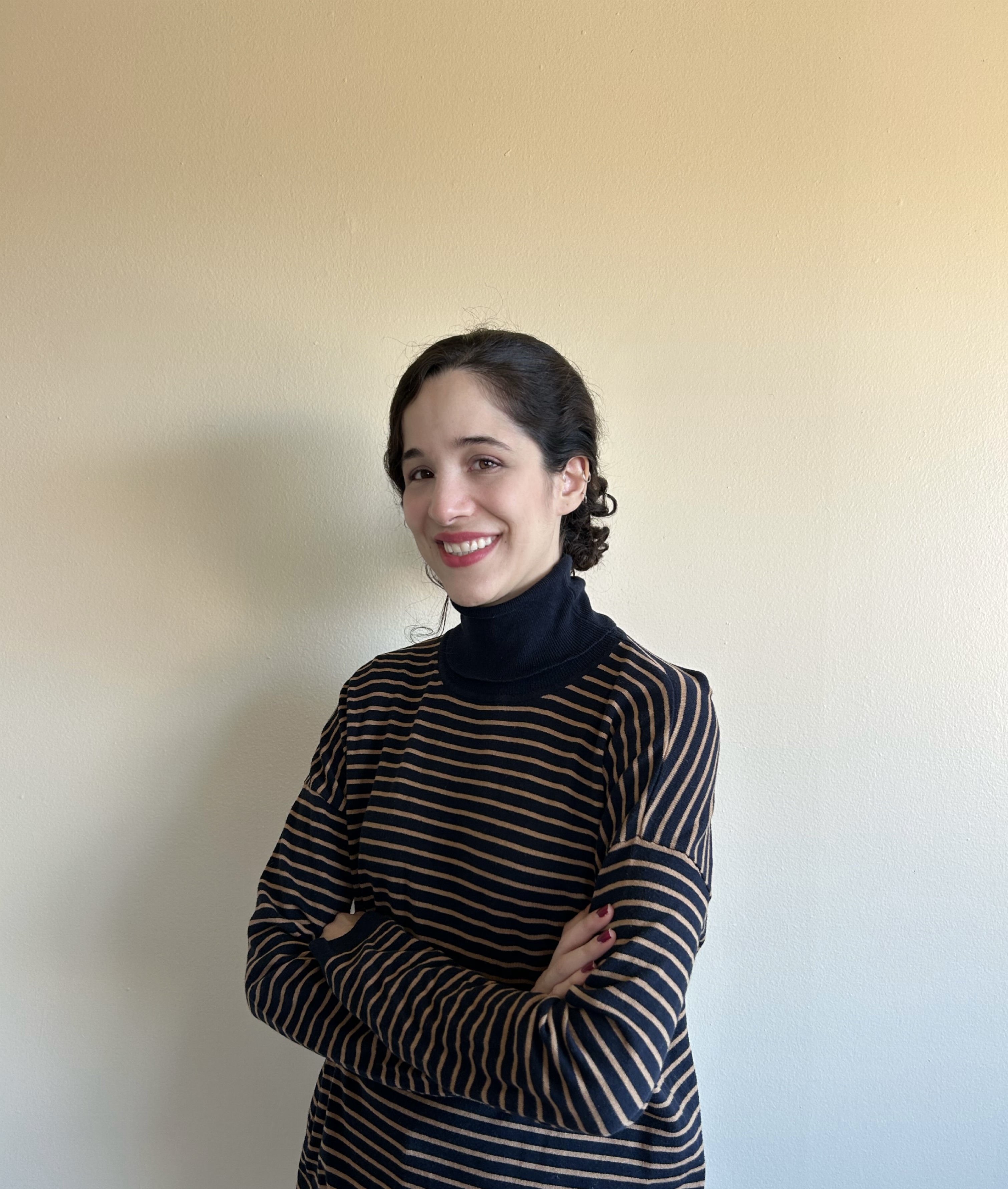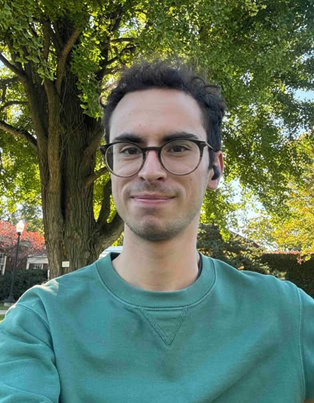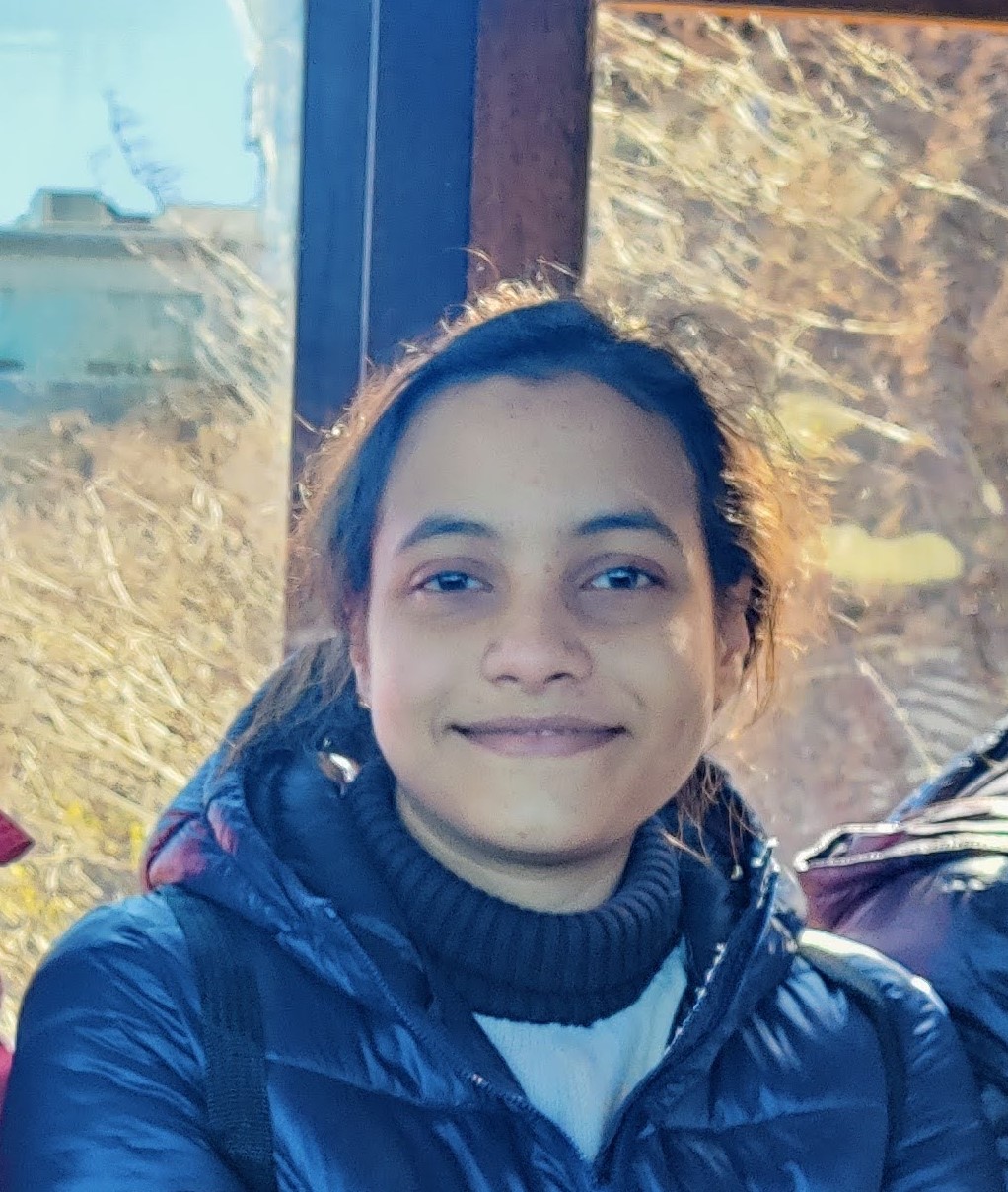

Abstract: Autonomous vehicle (AV) technologies have rapidly evolved, integrating advanced artificial intelligence, sensor fusion, and real-time decision-making capabilities. Ensuring safety, reliability, and performance remains paramount, necessitating rigorous verification and validation (V&V) methodologies. This presentation focuses recent advancements in AV systems, focusing on perception, planning, and control enhancements. It also explores state-of-the-art V&V frameworks, including simulation-based validation, hardware-in-the-loop (HIL) testing, and formal verification techniques. Emphasis is placed on scenario-based testing, regulatory compliance, and AI-driven validation strategies to address edge cases and unpredictable real-world conditions. Furthermore, the role of data collection and in house HIL design supporting Shift left testing is discussed. By integrating novel validation approaches with emerging AV architectures, this work aims to establish robust methodologies for safe and scalable deployment. The findings contribute to ongoing efforts in standardizing V&V processes, ensuring AV systems meet stringent safety and performance criteria before real-world implementation.

Speaker’s Biography: Kartik Srinivasan is a Staff Systems Engineer specializing in Hardware-in-the-Loop (HIL) Verification & Validation (V&V) for autonomous vehicles. With over a decade of experience in automotive and autonomous systems, he has played a pivotal role in developing HIL V&V strategies for Level 4 autonomous trucks at Torc Robotics. His expertise includes designing HIL test environments, system integration, and test automation for safety-critical vehicle systems. Previously, Kartik led HIL validation teams at Motional, contributing to the development of Drive-by-Wire and Perception subsystem testing frameworks. His work at Nexteer Automotive and LG Chemical Power further strengthened his experience in mechatronic test benches, functional safety, and battery management systems. Holding a Master’s degree in Electrical Engineering from Michigan Technological University, Kartik has pioneered innovative HIL testing methodologies. Passionate about AV safety and scalable validation frameworks, he actively contributes to advancing the field of autonomous mobility.
Abstract: Markov decision processes, Monte Carlo tree search algorithms, and various reinforcement learning techniques are behind some of the latest advancements and successes in AI and Large Language Model chatbots. In this talk, simple problems such as the K-Armed Bandit problem will be used to illustrate some of the most fundamental principles and intuitions underlying these techniques. Simulations in more complicated games, such as MicroRTS, the Real-Time Strategy game created for AI research, will be used to show how more complicated problems can be solved in similar fashions. Separately, an overview of opportunities for Humanitarian Activities within both IEEE and IEEE Region 2 and the need for Humanitarian Technologies will be discussed briefly at the end of the session.

Speaker’s Biography: Dr. Chang Liu received his Ph.D. in Information & Computer Science from the University of California at Irvine in 2002. He is currently a full professor in Computer Science at Ohio University. Dr. Liu is a software engineering researcher working on the intersections of software engineering, artificial intelligence, mobile and virtual applications. He has published in IEEE Transactions on Software Engineering and ICSE (International Conference on Software Engineering) and won awards from the National Science Foundation and other federal agencies totaling over five million dollars. He is a member of the editorial board of Scientific Reports by Nature.
Abstract:
Existing defense strategies against cyberattacks on automated vehicles (AVs) often overlook the great potential of humans in detecting such attacks. To address this, we identified three types of human-detectable attacks targeting transportation infrastructure, AV perception modules, and AV execution modules. We proposed two types of displays: Alert and Alert plus Explanations (AlertExp), and conducted an online video survey study involving 260 participants to systematically evaluate the effectiveness of these displays across cyberattack types.
Results showed that AV execution module attacks were the hardest to detect and understand, but AlertExp displays mitigated this difficulty. In contrast, AV perception module attacks were the easiest to detect, while infrastructure attacks resulted in the highest post-attack trust in the AV system. Although participants were prone to false alarms, AlertExp displays mitigated their negative impacts, whereas Alert displays performed worse than having no display. Overall, AlertExp displays are recommended to enhance human detection of cyberattacks.
Speaker’s Biography: Yaohan Ding is a PhD candidate in the Intelligent Systems Program at the University of Pittsburgh. Her research interest lies in human-computer interactions, with a specific focus on enhancing user experiences in human-automated vehicle interactions and AR-based workforce training.
Abstract: Residual Dense Spatial Networks (RDSNs) are a deep learning technique that has been shown to be highly effective for lossy image reconstruction tasks. However, achieving efficiency for RDSNs in collaborative environments while preserving privacy remains underexplored and is a significant challenge. Federated Learning (FL) provides a viable approach to address the challenges related to lossy image reconstruction in collaborative environments. To tackle these challenges, we propose an innovative Privacy-Preserving Federated Learning-based RDSN (PPFL-RDSN) framework. The proposed framework extends the existing RDSN technique by integrating with it FL, customized local differential privacy, and a robust model watermarking technique. By ensuring that the raw training data remains on respective local client devices and applying local differential privacy to train a federated global model, PPFL-RDSN significantly enhances data privacy. The proposed mechanism watermarks local models to safeguard the integrity and authenticity of model updates without revealing the underlying data. We present empirical evaluations to demonstrate that PPFL-RDSN achieves model performance similar to comparable state-of-the-art methods while reducing computational time by about 6.56%, besides providing mitigation against key privacy and security attacks.

Speaker’s Biography: I am a 2nd year Ph.D. student at the University of Pittsburgh, researching Differential Privacy, Privacy-Preserving Machine Learning, etc. My advisor is Dr. James Joshi. I hold positions as a researcher at the European Information Technologies Certification Institute in Brussels, EU, and as a member of the Pittsburgh Quantum Institute. The Quantum Standards Group brings together a community of international experts in various fields who share a common interest in quantum technology and the development of industry specifications and standards. I served on the Organizational Committee for the 2024, 2025 IEEE International Conference on Collaboration and Internet Computing, 2024, 2025 IEEE International Conference on Cognitive Machine Intelligence and 2024 , 2025 IEEE International Conference on Trust, Privacy and Security in Intelligent Systems, and Applications; I volunteered to organize 2024 IEEE Security and Development Conference & IEEE Digital Privacy Workshop. Also, I served as the Teaching Assistant for the SHURE Project supported by the Idaho National Laboratory (INL) at Pitt in 2024.
Abstract: Byzantine Fault Tolerant (BFT) system designs have evolved to withstand increasingly challenging threat scenarios. In particular, network-attack-resilient BFT systems have developed frameworks for distributing replicas among multiple geographical sites to withstand sophisticated network denial of service attacks that can isolate an entire site. To make such systems economically feasible, data centers can be used in addition to on-premises sites to reduce the overall cost. Prior work focuses on developing system designs that tolerate a fixed number of replica failures and site disconnections. However, it has not considered the trade-offs between these designs in terms of their availability and cost. In this paper, we develop a framework to assess network-attack-resilient BFT systems in terms of their cost and availability, while accounting for differences between on-premises and data center sites. We compare five system designs proposed in the literature and identify the most cost-effective designs for a given availability target.
Speaker’s Biography: I am Aren Alyahya, an Information Science student with a passion for network and security topics. Having completed my bachelor’s degree in computer science at IMSIU, and master’s degree in information science in University of Pittsburgh, which developed my expertise in distributed systems and information analyses. I have also gained practical experience through as a Data science intern. Throughout my academic journey, I engaged in research on related to distributed systems and overlay network. Currently, my aims to further explore topics related to fault tolerant systems contributing to its research community. With a commitment to academic excellence and innovation. I aspire to continue working with systems making a meaningful impact in the field.
Abstract: Graph prompt tuning has emerged as a promising paradigm to effectively transfer general graph knowledge from pre-trained models to various downstream tasks. However, its susceptibility to backdoor attacks, where adversaries insert triggers to manipulate outcomes, raises a critical concern. We conduct the first study to investigate such vulnerability, revealing that backdoors can disguise benign graph prompts, thus evading detection. We introduce Krait, a novel graph prompt backdoor. Experiments on four real-world graphs demonstrate that Krait can efficiently embed triggers to merely 0.15% to 2% of training nodes, achieving high attack success rates without sacrificing clean accuracy. Our experiments further show that Krait remains potent across different transfer cases, attack types, and graph neural network backbones. Additionally, Krait can be successfully extended to the black-box setting, posing more severe threats. Finally, we analyze why Krait can evade existing defenses, and provide practical insights for detecting and mitigating this class of attacks.

Speaker’s Biography: Ying Song is a third-year PhD student in Information Science at University of Pittsburgh,under the supervision of Dr. Balaji Palanisamy. Before that, she received her master degree at National University of Singapore.Her research interests focus on trustworthy graph learning (especially designing novel adversarial attacks), causal learning and reasoning, AI for Science, etc.
Abstract: Flash loan attacks pose a major threat to DeFi protocols that hold a Total Value Locked (TVL) exceeding $106 billion. These attacks use the atomicity property of blockchains to drain funds from smart contracts in a single transaction. While existing research primarily focuses on price manipulation attacks, mitigating non-price flash loan attacks that exploit smart contracts’ zero-day vulnerabilities remains largely unaddressed. These attacks are challenging to detect due to their unique patterns, time sensitivity, and complexity. We present FlashGuard, a runtime detection and mitigation method for non-price flash loan attacks. FlashGuard targets a combination of smart contract function signatures to identify attacks in real-time and counterattack by disrupting the attack transaction atomicity. When FlashGuard detects an attack, it dispatches a stealthy dusting counterattack transaction to miners, altering the victim contract’s state and forcing the attack transaction to revert. FlashGuard achieves an average real-time detection latency of 150.31ms, a detection accuracy of over 99.93%, an average disruption time of 410.92ms, and a potential savings of $405 million in financial losses.

Speaker’s Biography: Abdulrahman Alhaidari is a third-year PhD student in the Department of Informatics and Networked Systems at the University of Pittsburgh. His research interests include decentralized finance (DeFi) and blockchain security, on-chain machine learning, and attack mitigation in DeFi.
Abstract: Higher education is crucial in preparing students for the workforce by developing critical skills. However, there is limited documentation on how these skills align with detailed workplace requirements. To address this gap, we present Course-Skill Atlas, a longitudinal dataset derived from over three million course syllabi from thousands of U.S. institutions. Using NLP, we quantify the alignment between course syllabi and detailed workplace activities defined by the U.S. Department of Labor. These alignment scores are aggregated to create skill profiles for institutions and academic majors, providing a comprehensive view of higher education’s role in workforce preparation. Course-Skill Atlas offers a large-scale framework for analyzing how academic programs contribute to skill development, enabling research on workforce readiness and actionable strategies for aligning education with labor market demands, particularly as technological advancements reshape skill requirements. “Javadian Sabet, A., Bana, S.H., Yu, R., and Morgan R. Frank. Course-Skill Atlas: A national longitudinal dataset of skills taught in U.S. higher education curricula. Sci Data 11, 1086 (2024). https://doi.org/10.1038/s41597-024-03931-8”

Speaker’s Biography: Alireza Javadian Sabet is a Ph.D. student in the Department of Informatics and Networked Systems (DINS) at the University of Pittsburgh, where he focuses on Computational Social Science. His research at the Resilient Economy Lab (REL) aims to empirically study workforce development through education to inform policy decisions and enhance upward mobility and access to opportunities. He earned a master’s degree in Computer Science and Engineering from Politecnico di Milano (PoliMi) in Italy, where he also served as a research fellow at the Data Science Lab and the DEpendable Evolvable Pervasive Software Engineering group. His research interests span computational social science, natural language processing, the future of work, knowledge extraction from social networks, and context-aware recommender systems. https://www.linkedin.com/in/arjsabet/
Abstract: Semiconductors power modern life, from consumer electronics to defense systems. The CHIPS Act (Creating Helpful Incentives to Produce Semiconductors) invests $52 billion to revitalize domestic chip production and secure supply chains, but effective workforce strategies remain elusive. This work integrates skill similarity metrics, workforce departure rates, and political data to pinpoint labor pools best suited for emerging chip facilities. Findings show expansions concentrate in established semiconductor hubs and swing counties with moderate Republican support, suggesting a balance between industry drivers and electoral considerations. Significant skill capacity remains overlooked in communities eager for these investments. By highlighting readiness in underutilized regions, this work helps targeted training and job placement initiatives. Local leaders and industry actors gain clarity on bridging labor gaps while strengthening America’s technology base. The result is a blueprint for economically imperative semiconductor growth that respects production requirements and local livelihoods. Coordination between workforce readiness and legislation transforms chip manufacturing.

Speaker’s Biography: Arezou Farzaneh is a Ph.D. student in the Department of Informatics and Networked Systems (DINS) at the University of Pittsburgh, where she focuses on Computational Social Science. Her research at the Resilient Economy Lab (REL) investigates workforce dynamics and labor transitions in the context of large-scale industrial and energy policies. She holds a master’s degree in Psychology and a Bachelor’s degree in Computer Science from Sharif University of Technology. By applying computational methods to labor market data, her work explores how policies shape labor market trends, workforce availability, and regional economic development. Her research provides insights to support workforce development strategies that foster economic resilience in rapidly evolving industries. https://www.linkedin.com/in/arezou-farzaneh/
Abstract: In an ideal world, every scientist's contribution would be fully recognized, driving collective scientific progress. In reality, however, only a few scientists are recognized and remembered. Sociologist Robert Merton first described this disparity between contribution and recognition as the Matthew Effect, where citations disproportionately favor established scientists, even when their contributions are no greater than those of junior peers. Merton's work, however, did not account for coauthored papers, where citations acknowledge teams rather than individual authors. How do teams affect reward systems in science? We hypothesize that teams will divide and obscure intellectual credit, making it even harder to recognize individual contributions. To test this, we developed and analyzed the world's first large-scale observational dataset on author contributions, derived from LaTeX source files of 1.6 million papers authored by 2 million scientists. We also quantified individual credits within teams using a validated algorithm and examined their relationship to contributions, accounting for factors such as team size, career stage, and historical time. Our findings confirm that teams amplify the Matthew Effect and overshadow individual contributions. As scientific research shifts from individual efforts to collaborative teamwork, this study highlights the urgent need for effective credit assignment practices in team-based science.
Speaker’s Biography: I am a first-year PhD student from the School of Computing and Information at the University of Pittsburgh, where I work with Dr. Lingfei Wu. Driven by a passion for understanding the mechanisms of scientific progress, I leverage my sociology background to investigate the social dynamics that shape innovation. Currently, my research explores how scientists achieve recognition within their intellectual communities.
Abstract: Retractions in science are often viewed as individual failures, signaling incompetence or misconduct. However, despite increased teamwork—where collective decision-making should enhance rigor and reliability—retraction rates continue to rise. We investigate this paradox by analyzing 43,430 retracted articles (1940–2024) authored by 154,719 scientists using RetractionWatch data. Among them, 14% have multiple retractions, which cluster within specific career stages rather than occurring randomly, suggesting recurrent questionable research practices rather than isolated errors. To explore the social dynamics of retraction, we examine lab structures of 152,113 principal investigators (PIs) funded by U.S. agencies (NSF, NIH), identifying 1,211 PIs with 1,502 junior lab members involved in retractions. Logistic regression on 989,562 papers reveals that scientists in larger labs and teams face disproportionately higher retraction rates, particularly in high-output environments. We conclude that retractions stem more from team and lab dynamics than individual accountability.
Speaker’s Biography: Yiling Lin is a fourth-year PhD student from the School of Computing and Information at the University of Pittsburgh. As a computational social scientist, Yiling is deeply motivated by this question: Where do new ideas come from? And the team mechanism of scientific discovery and innovation. Yiling actively publish and present in top venues of science and innovation studies, including Nature, the Journal of Informetrics (JOI), the International Conference on the Science of Science and Innovation (ICSSI), The Workshop on Natural Language Processing for Scientific Texts (SciNLP), The International Conference on Computational Social Science (IC2S2), and beyond.
Abstract:
Mental health issues affect over one in five U.S. adults, making accessible support crucial. Online communities offer tailored social support, with different groups valuing distinct types of responses. For instance, transgender individuals benefit from connectedness, mothers seek shared understanding, and veterans prefer practical advice. However, these communities depend on the availability of its members and willingness to engage. Given these limitations, many are exploring conversational AI agents as an alternative to receive timely and accessible mental health therapy.
Despite their accessibility, AI chatbots often fail to provide nuanced, community-specific responses. LGBTQ+ users report chatbots giving overly generic support, raising concerns about broader limitations. This study examines AI alignment with community needs by analysing mental health discussions from 15 Reddit communities across gender, finance, parenting, military, and employment topics. Using the Social Support Behavioral Code framework, we evaluate AI-generated responses against human-provided ones. Preliminary findings indicate AI struggles with smaller, marginalised groups, which highlights the need for more adaptive, culturally sensitive AI systems in mental health care, rather than a one-size fits all.

Speaker’s Biography: Andrew is a Ph.D. student at the School of Computing and Information, University of Pittsburgh, working under Prof. Yu-Ru Lin in the Computational Social Dynamics Lab. His research focuses on studying socially-aware natural language processing systems to better understand human social behaviour and bridge societal divides in digital spaces. They are also interested in the ethical integrity of such technologies. They hold a master's in AI from Stockholm University, where they worked with a Ph.D. student from Spotify to improve podcast comprehension using topic segmentation and text summarisation. Previously, they also earned a bachelor's in AI from the University of Malta, where they studied the relationship between users' psychological traits and their online social connections.
Abstract: Elected officials have privileged roles in public communication. In contrast to national politicians, whose posting content is more likely to be closely scrutinized by a robust ecosystem of nationally focused media outlets, sub-national politicians are more likely to openly disseminate harmful content with limited media scrutiny. In this work, we analyze the factors that explain the online visibility of over 6.5K unique state legislators in the US and how their visibility might be impacted by posting low-credibility or uncivil content. We conducted a study of posting on Twitter/X and Facebook (FB) during 2020-21 to analyze how legislators engage with users on these platforms. The results indicate that distributing content with low-credibility information attracts greater attention from users on FB and Twitter for certain political leanings. Conversely, posting content that is considered uncivil on Twitter receives less attention. A noticeable scarcity of posts containing uncivil content was observed on FB, which may be attributed to the different communication patterns of legislators on these platforms. In most cases, the effect is more pronounced among the most ideologically extreme legislators. Our research explores the influence exerted by state legislators on online political conversations, with Twitter and FB serving as case studies. Furthermore, it sheds light on the differences in the conduct of political actors on these platforms. Overall, this study contributes to a better understanding of the role that political figures play in shaping online political discourse.

Speaker’s Biography: Ahana Biswas is a third-year PhD student in Information Science at the University of Pittsburgh, where she conducts research at the PITT Computational Social Dynamics Lab (PICSO). Her work explores how digital platforms shape public discourse, social interactions, and community dynamics. She is particularly interested in the factors that drive online attention, the spread of information, and the influence of network structures on engagement. Her research focuses on the intersection of online interactions and societal impact, with an emphasis on polarization, political communication, and the dissemination of harmful content. Through her work, she seeks to uncover the mechanisms that shape digital engagement and contribute to fostering more constructive and informed online spaces.
Abstract: Power flow control techniques have been practiced, from using inductors, capacitors, transformers and load tap changers in the earlier days of electrical engineering to power electronics-based solutions in recent years. Even though the costs and complexities of the available solutions vary widely, the basic underlying theory of power flow control is still the same as it has always been. The question is which solution one should employ. The answer depends on knowing what the true need is. The power industry’s pressing need for the most economical ways to transfer bulk power along a desired path may be met by building new transmission lines, which is a long and costly process. Alternatively, it may be quicker and cheaper to utilize the existing transmission lines more efficiently. The key is to identify the underutilized transmission lines and harness their dormant capacities to increase the power flows to the lines’ thermal limits using the most cost-effective and time-tested solutions.

Speaker’s Biography: Kalyan Sen is the President & Chief Technology Officer of Sen Engineering Solutions, Inc. (www.sentransformer.com) that specializes in developing SMART power flow controllers—a functional requirements-based and cost-effective solution. Kalyan worked for 33 years in academia and industry. He was a key member of the Flexible Alternating Current Transmission Systems (FACTS) development team at the Westinghouse Science & Technology Center for which he became a Westinghouse Fellow Engineer. He contributed to concept development, simulation, design, and commissioning of FACTS projects at Westinghouse. He conceived some of the basic concepts in power flow control technology for which he was elevated to the IEEE Fellow grade with the citation: for the development and application of power flow control technology. He is the Co-inventor of the Sen Transformer, which is commercially available to regulate ±6.5 MVA line power in a 33 kV line.
Abstract: Password-based authentication is still one of the most widely used mechanisms to verify user identity on the Internet and its popular usage continues in virtual reality(VR) applications. As a result, various forms of attacks on password-based authentication in traditional environments such as shoulder surfing and keystroke inference, are still effective in VR applications. Many works in the literature showed key inference attacks on virtual keyboards in VR with high accuracy, while few work demonstrated an effective and low-cost defense. To fill this gap, we develop a new QWERTY keyboard for virtual reality applications that is resilient to keystroke inference attacks. The proposed keyboard carefully introduces interference into the information collected by attackers during the typing process, making the password inference much more difficult. The new design is evaluated through both simulation experiments and a real-world user study, and our results show that it can significantly reduce the accuracy of the attack while incurring a modest overhead from the usability standpoint.
Speaker’s Biography: My name is Yijun Yuan, I am a second-year PhD student in the School of Computing and Information at University of Pittsburgh advised by Dr. Balaji Palanisamy. I received my master’s degree at the University of Pittsburgh in Information Science. My research interests focus on authentication security in XR (virtual reality, augmented reality, mixed reality) scenarios.
Abstract: The spread of hate-based conspiracy theories (HB-CTs) is linked to hate-based violence, yet the mechanisms driving their dissemination online remain unclear. This study surveyed 652 US social media users to explore (a) the prevalence of exposure to, belief in, and likelihood of spreading HB-CTs across four topics—white supremacy, anti-Muslim, anti-Semitism, and anti-LGBTQ—and (b) the factors predicting the intention to spread them, with a focus on gender differences. Results show that 82% of respondents have encountered HB-CTs online, with two-thirds believing in at least one. A quarter indicated a willingness to spread such content. Belief in HB-CTs, political discussions, and engagement in politically homogeneous circles were significant predictors of spreading intent. Political homophily was more directly linked to spreading intent in men, with echo-chamber discussions amplifying this effect. The manipulation of mainstream media by far-right groups, including white men’s rights activists, may help explain these trends in the spread of HB-CTs.
Speaker’s Biography: Rr. Nefriana is a PhD student in Information Science at the University of Pittsburgh, specializing in computational social science, community dynamics, and socio-demographic measurement. Her research focuses on understanding and addressing harmful online behaviors, such as conspiracy theories, misinformation, and extremist discourse. She integrates social science theories with computational methods to analyze large-scale social media, survey, and online experiment data to uncover patterns in harmful narratives and generate actionable insights to address societal challenges.
Abstract: This study investigates the integration of large language model (LLM) capabilities into U.S. higher education by analyzing course syllabi from the Open Syllabus Project (OSP). Using a natural language processing framework, Syllabus2O*NET, the authors identify and quantify skills taught in syllabi that align with LLM functionality, generating "exposure scores" based on GPT-4's task assessments. Findings reveal that fields like Library Science, Business, and Education demonstrate the highest alignment, with exposure levels steadily increasing across disciplines over time. Disparities are evident across demographics, with higher exposure rates among women and White students compared to other groups. These results underscore an ongoing transformation in educational curricula, reflecting a shift toward teaching skills that LLMs can potentially enhance. However, the study emphasizes the importance of maintaining focus on uniquely human competencies, such as critical thinking and ethical decision-making, particularly in disciplines heavily influenced by LLM exposure.
Speaker’s Biography: Alireza Javadian Sabet is a Ph.D. student in the Department of Informatics and Networked Systems (DINS) at the University of Pittsburgh, where he focuses on Computational Social Science. His research at the Resilient Economy Lab (REL) aims to empirically study workforce development through education to inform policy decisions and enhance upward mobility and access to opportunities. He earned a master’s degree in Computer Science and Engineering from Politecnico di Milano (PoliMi) in Italy, where he also served as a research fellow at the Data Science Lab and the DEpendable Evolvable Pervasive Software Engineering group. His research interests span computational social science, natural language processing, the future of work, knowledge extraction from social networks, and context-aware recommender systems. https://www.linkedin.com/in/arjsabet/
Abstract:
The Sen Transformer is a unique device that can control both active and reactive power separately and at a much more affordable cost. This allows one to control active power flow in transmission lines and enables control of system conditions by having the reactive power flow in check.
NYPA is collaborating on a research and development project to design, manufacturer and test a first-of-its-kind transformer that controls the power flow in the transmission system and reduces system congestion by navigating power towards underutilized transmission lines.
The first commercial-grade Sen Transformer has demonstrated that ±6.5 MVA of line power can be regulated in a 33 kV line with independent active and reactive power flow control and bidirectional power flow control. This technology can be customized, based on the required range and speed of operation, component non-obsolescence, ease of relocation, and interoperability, which may be a major factor in transitioning to the clean energy in the future.
Speaker’s Biography: Kalyan K. Sen is the President & Chief Technology Officer of Sen Engineering Solutions, Inc. (www.sentransformer.com) that specializes in developing SMART power flow controllers—a functional requirements-based and cost-effective solution. Kalyan worked for 33 years in academia and industry. He was a key member of the Flexible Alternating Current Transmission Systems (FACTS) development team at the Westinghouse Science & Technology Center for which he became a Westinghouse Fellow Engineer. He contributed to concept development, simulation, design, and commissioning of FACTS projects at Westinghouse. He conceived some of the basic concepts in power flow control technology for which he was elevated to the IEEE Fellow grade with the citation: for the development and application of power flow control technology. LinkedIn: https://www.linkedin.com/in/kalyan-sen-6a52813/
Abstract: Flash loan attacks pose a major threat to DeFi protocols that hold a Total Value Locked (TVL) exceeding $106 billion. These attacks use the atomicity property of blockchains to drain funds from smart contracts in a single transaction. While existing research primarily focuses on price manipulation attacks, mitigating non-price flash loan attacks that exploit smart contracts’ zero-day vulnerabilities remains largely unaddressed. These attacks are challenging to detect due to their unique patterns, time sensitivity, and complexity. We present FlashGuard, a runtime detection and mitigation method for non-price flash loan attacks. FlashGuard targets a combination of smart contract function signatures to identify attacks in real-time and counterattack by disrupting the attack transaction atomicity. When FlashGuard detects an attack, it dispatches a stealthy dusting counterattack transaction to miners, altering the victim contract’s state and forcing the attack transaction to revert. FlashGuard achieves an average real-time detection latency of 150.31ms, a detection accuracy of over 99.93%, an average disruption time of 410.92ms, and a potential savings of $405 million in financial losses.
Speaker’s Biography: Abdulrahman Alhaidari is a third-year PhD student in the Department of Informatics and Networked Systems (DINS) at the University of Pittsburgh. His research interests include decentralized finance (DeFi), blockchain security, on-chain machine learning, and attack mitigation in DeFi.
Click below to register.
Location: 3rd Floor Theater, Information Science Building, Pittsburgh, PA
(135 N Bellefield Ave, Pittsburgh, PA 15260)
Remote Option: Available via Zoom
If you have any question, reach us at: aba70@pitt.edu